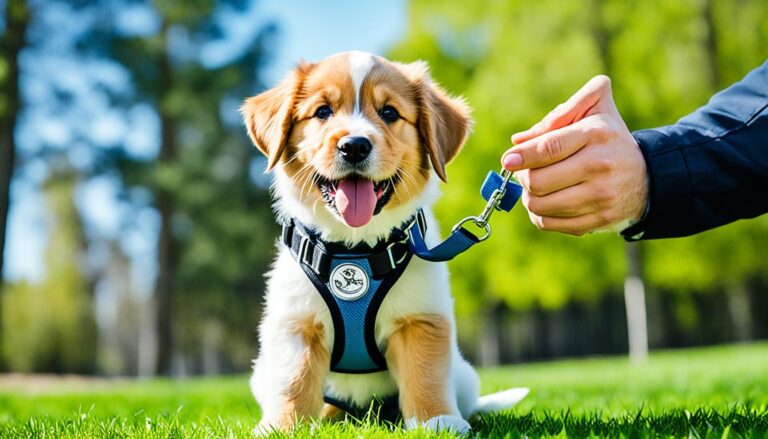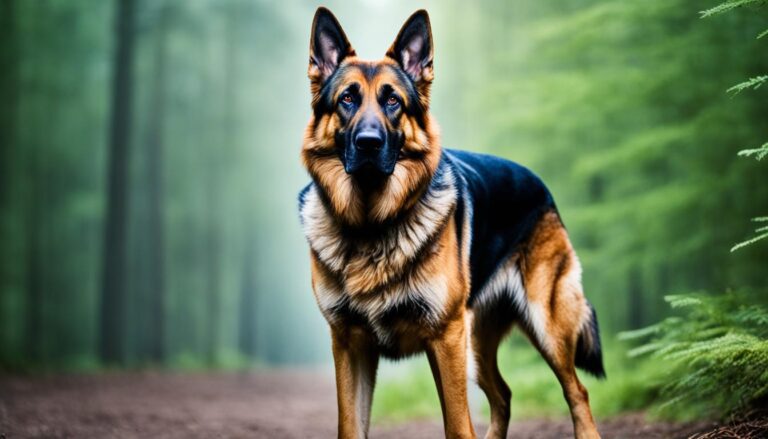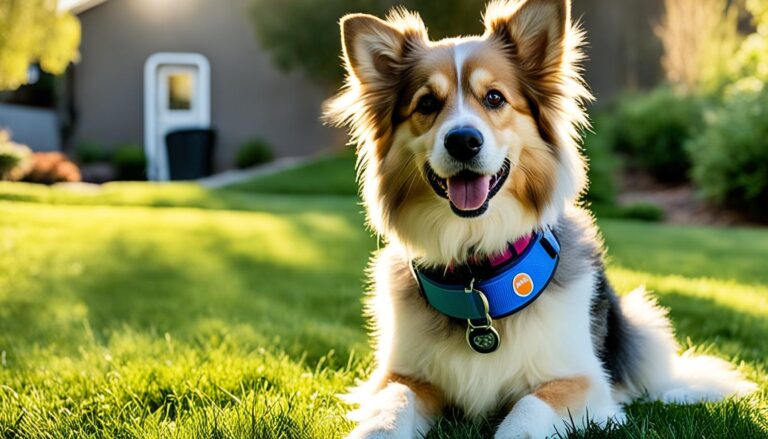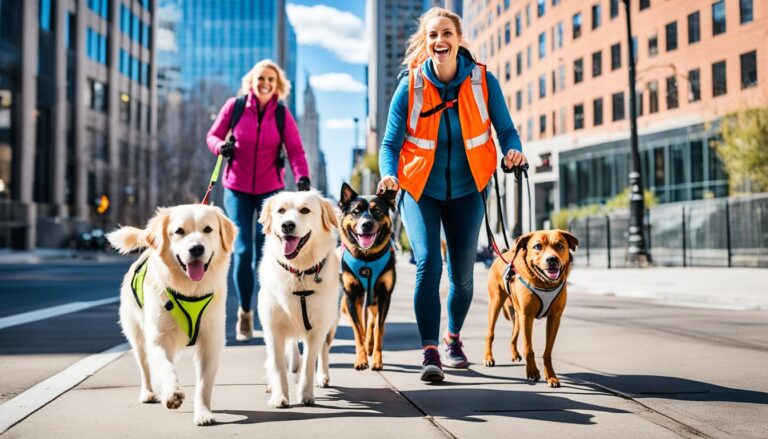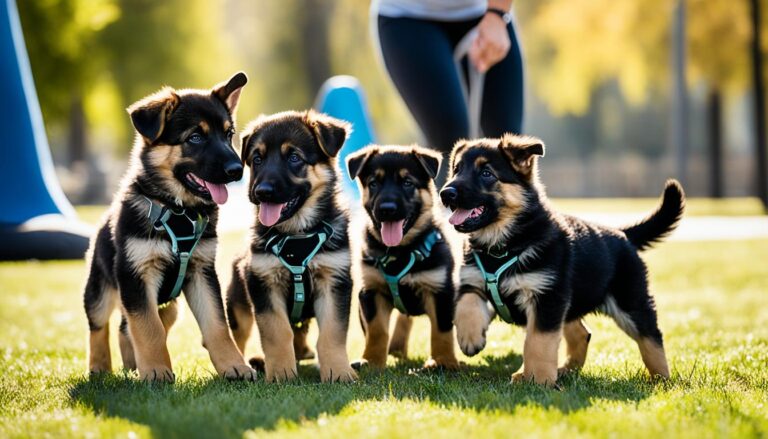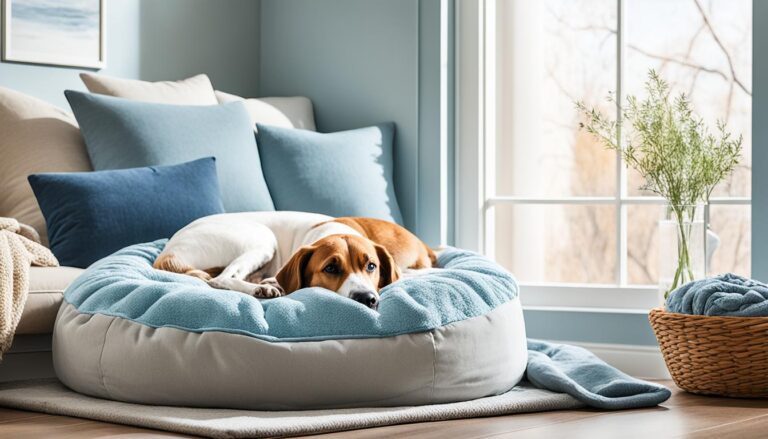The Perfect Guide to Raising a Quiet Puppy: Gentle Training Techniques for a Calm Canine Companion
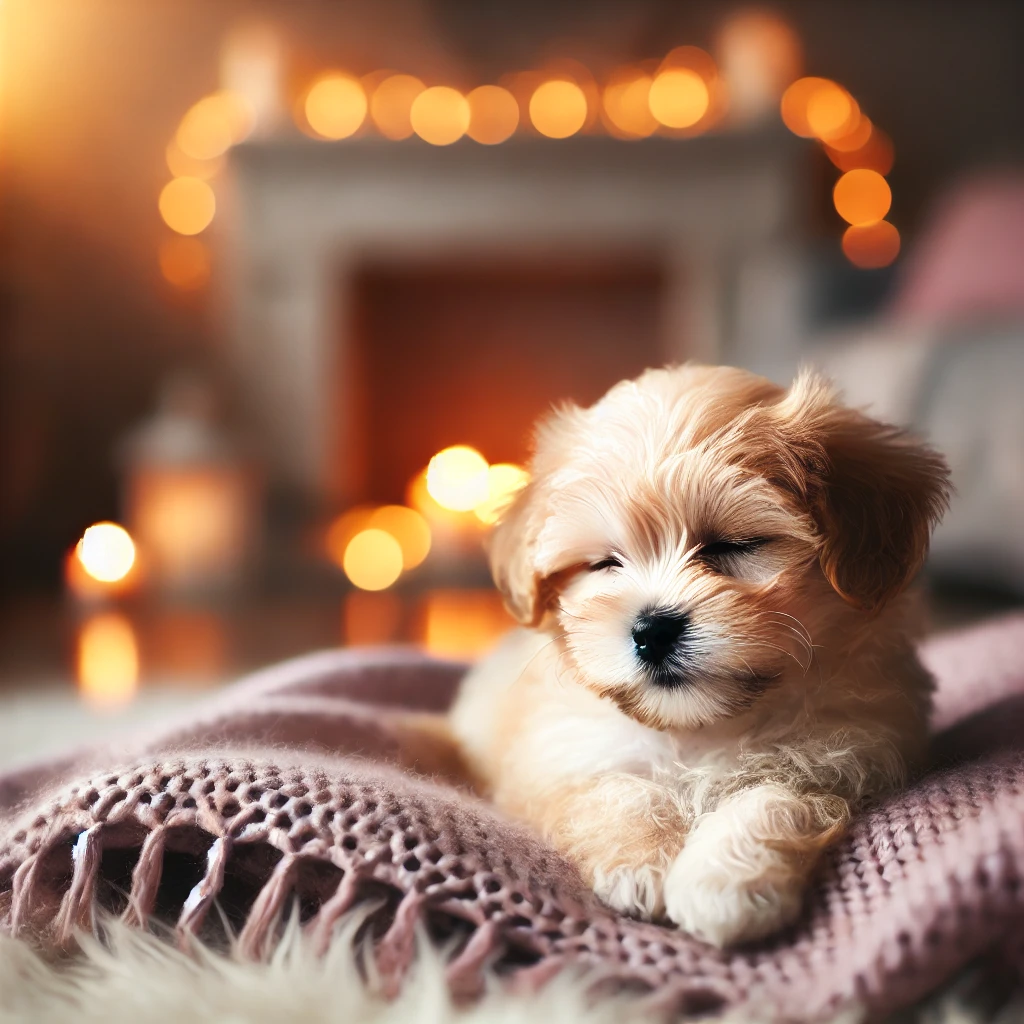
Introduction:
Bringing a new puppy into your home is an exciting adventure filled with wagging tails, wet noses, and boundless energy. However, as adorable as they are, puppies can sometimes be a handful with their boisterous behavior. That’s where the concept of raising a “quiet puppy” comes in. In this comprehensive guide, we’ll explore gentle training techniques to help you nurture a calm, well-mannered canine companion.
A quiet puppy isn’t just about reducing noise; it’s about fostering a gentle, composed demeanor that will make your furry friend a joy to be around for years to come. Let’s dive into the world of quiet puppy training and discover how to create harmony in your home.
I. The Importance of Gentle Behavior in Puppies
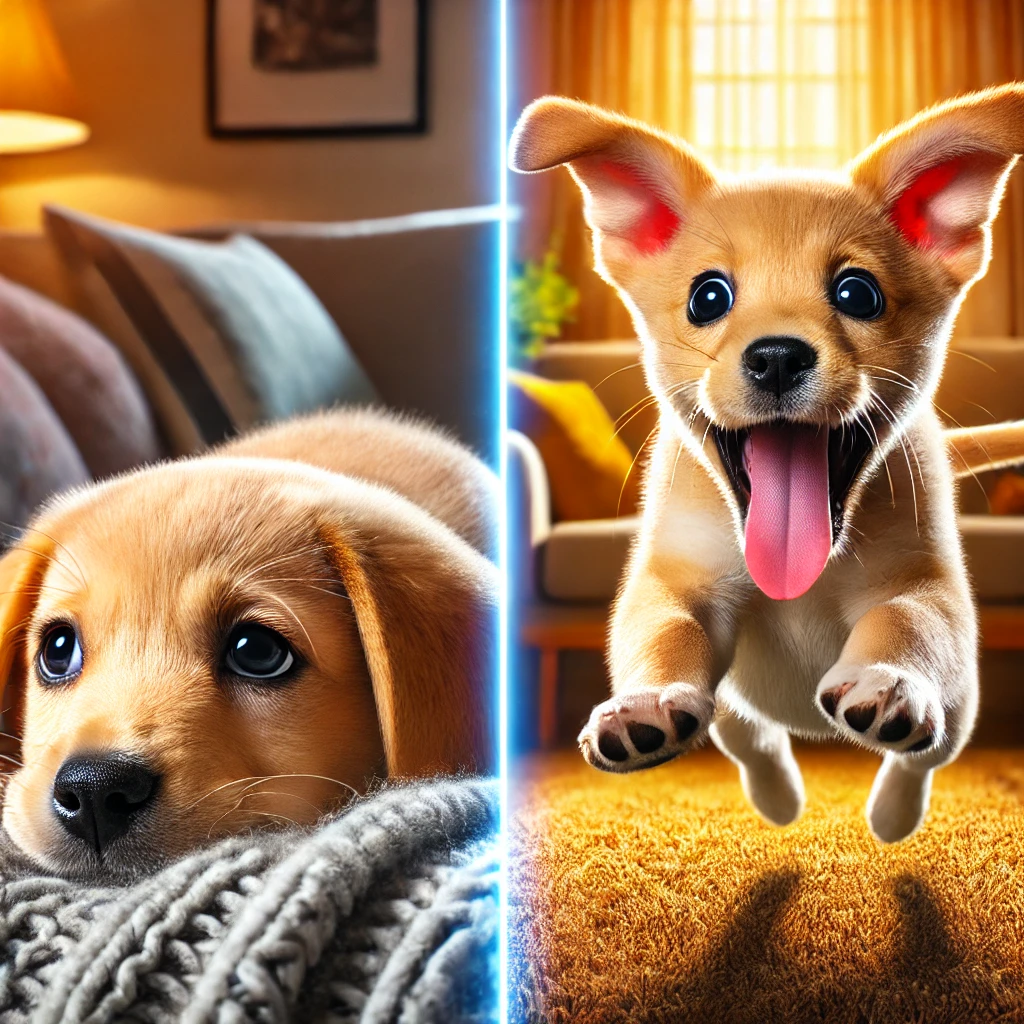
Raising a gentle, quiet puppy goes beyond just having a peaceful household. It lays the foundation for a well-adjusted adult dog. Here’s why it matters:
- Safety First: A calm puppy is less likely to accidentally harm themselves or others through overexcitement.
- Social Acceptance: Gentle puppies are more welcome in various settings and around different people.
- Easier Training: A quiet, attentive puppy is typically more receptive to learning and following commands.
- Stress Reduction: A calm environment benefits both the puppy and the family, reducing stress for everyone.
- Long-term Behavior: Early gentle behavior often translates to a well-mannered adult dog.
By focusing on gentle training techniques from the start, you’re setting your puppy up for a lifetime of positive interactions and good behavior.
II. Gentle Treat Taking for Quiet Puppies
One of the first challenges many puppy owners face is the exuberant – and sometimes rough – way puppies grab treats. Teaching your puppy to take treats gently is a crucial step in their journey to becoming a calm, quiet companion.
A. The Gentle Treat Taking Method

- Pre-feeding Strategy:
- Feed your puppy their regular meal before training sessions.
- This reduces hunger-driven excitement and makes it easier for them to focus.
- Using Verbal Commands:
- Introduce the words “gentle” or “easy” as you offer treats.
- Use a calm, soothing tone to reinforce the desired behavior.
- Correcting Grabby Behavior:
- If your puppy lunges for the treat, close your hand and withdraw it.
- Say “no” firmly but without raising your voice.
- Wait for your puppy to calm down before trying again.
- Positive Reinforcement for Gentle Behavior:
- When your puppy approaches slowly and takes the treat gently, praise them enthusiastically.
- Use words like “good” or “yes” to mark the correct behavior.
- Repeat this process several times a day for consistent learning.
B. The Using an Implement Method
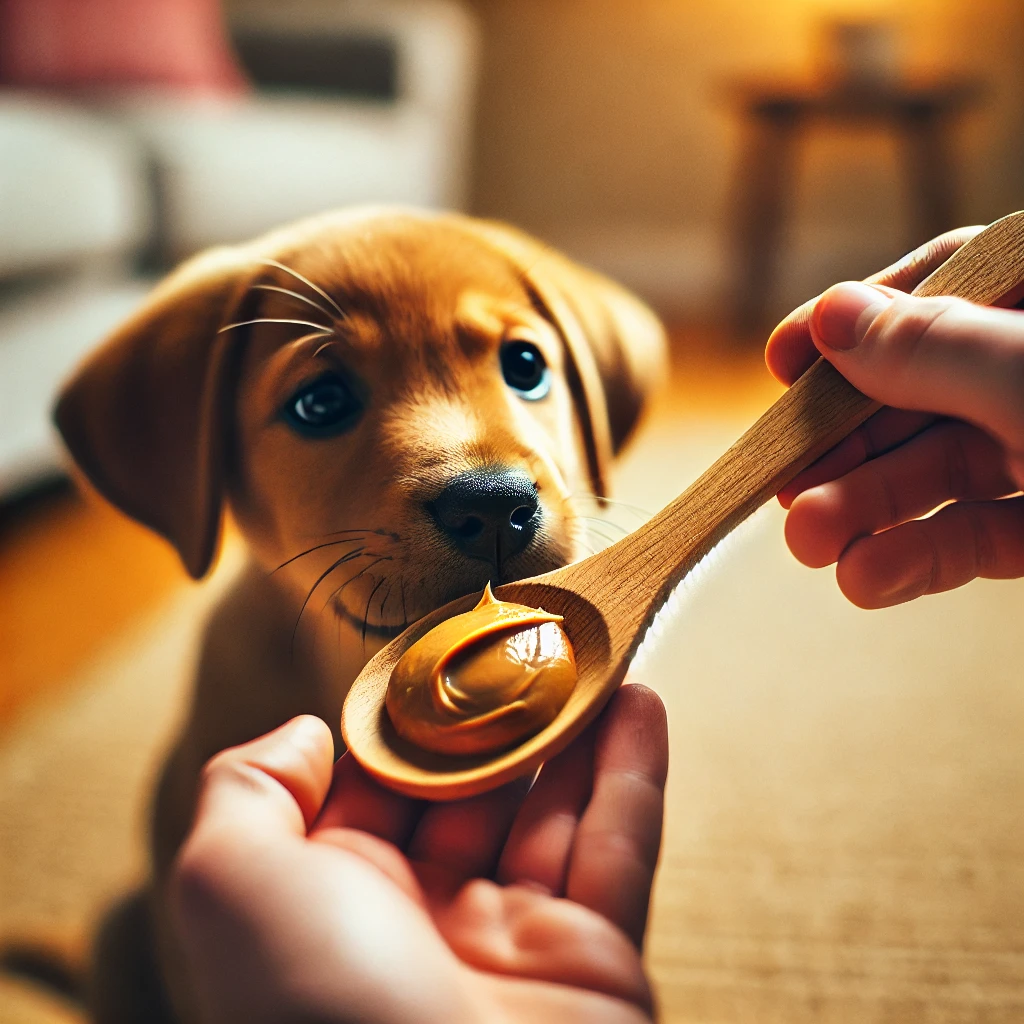
For puppies who are particularly enthusiastic treat-takers, the implement method can be a safer alternative:
- Choose Your Tool:
- A wooden spoon works well for this method.
- Apply a small amount of peanut butter or cream cheese to the end.
- Offer and Command:
- Hold the spoon in front of your puppy.
- Say “gentle” or “easy” as you present it.
- Correct and Withdraw:
- If your puppy grabs aggressively, withdraw the spoon.
- Have someone help restrain the puppy if necessary.
- Wait for calm behavior before trying again.
- Reward Gentle Approaches:
- When your puppy licks the treat calmly, praise them.
- Gradually transition to offering treats from your hand once they’ve mastered the spoon.
Remember, consistency is key. Practice these methods several times a day, and soon your puppy will learn that gentle behavior yields rewards.
III. Calm Play Techniques
![A puppy playing calmly with a chew toy]](https://quitepuppy.com/wp-content/uploads/2024/06/35e1da2a-e88c-4a44-8fab-bf4f0c698dd2.webp)
Playtime is essential for a puppy’s development, but it’s equally important to teach them how to play calmly. The Play Gently with Toy Method is an effective technique for encouraging quiet, controlled play.
A. The Play Gently with Toy Method
- Redirect Mouthing Behavior:
- Always have appropriate chew toys on hand.
- When your puppy starts to mouth or nip at you, immediately offer a toy instead.
- Stop Play When It Gets Rough:
- If your puppy becomes too excited or starts to play aggressively, end the play session immediately.
- Stand up and walk away without engaging further.
- Consistency in Play Rules:
- Establish clear rules for playtime and stick to them.
- All family members should follow the same guidelines to avoid confusing the puppy.
- Praise Calm Play:
- When your puppy plays gently with their toys, offer plenty of verbal praise.
- This reinforces the idea that calm play is desirable.
By consistently applying these techniques, you’ll help your puppy understand that gentle play is rewarding and fun.
IV. Creating a Calm Environment for Your Quiet Puppy
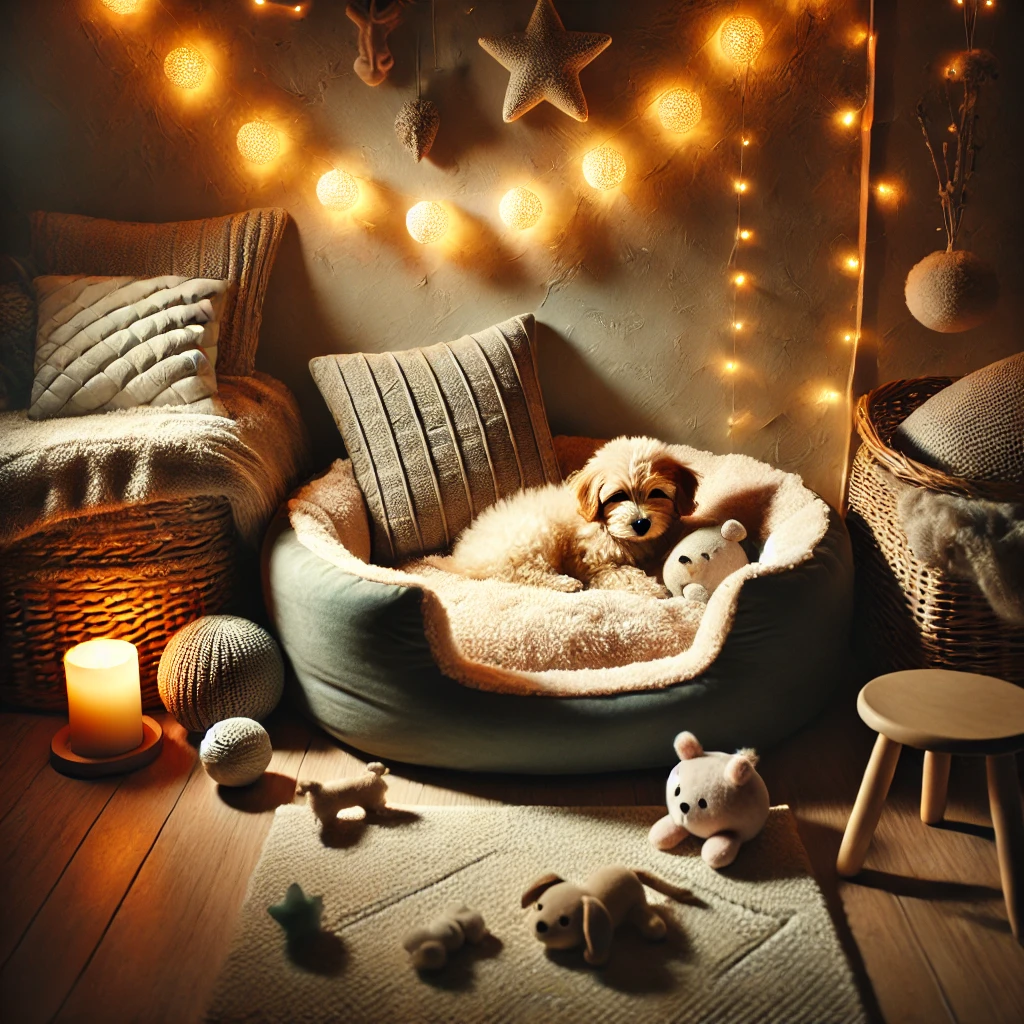
The environment you create for your puppy plays a significant role in their behavior. A calm space encourages quiet, gentle behavior.
A. Choosing Appropriate Toys for Quiet Play
- Soft Chew Toys:
- Look for toys made of soft rubber or plush materials.
- Avoid toys that squeak or make loud noises, as these can overstimulate your puppy.
- Puzzle Toys:
- Interactive toys that dispense treats slowly can keep your puppy quietly engaged.
- These toys also provide mental stimulation, which can tire out your puppy in a calm way.
- Comfort Items:
- A soft blanket or stuffed toy can provide comfort and encourage quiet time.
B. Setting Up a Peaceful Space
- Designated Quiet Area:
- Create a specific spot in your home for your puppy to relax.
- Use a crate or a corner with a comfortable bed.
- Calming Scents:
- Consider using pet-safe essential oils like lavender to create a soothing atmosphere.
- Noise Control:
- Minimize loud noises and sudden sounds in your puppy’s environment.
- Use white noise machines or soft music to mask disruptive sounds if necessary.
By thoughtfully designing your puppy’s environment, you’re setting the stage for calm behavior and quiet moments.
V. Verbal Commands and Positive Reinforcement

Clear communication and positive reinforcement are cornerstone
s of effective quiet puppy training.
A. Teaching “Be Gentle” and “Easy” Commands
- Consistent Language:
- Choose your command words and stick to them.
- Use “be gentle” or “easy” in a calm, clear voice.
- Pair with Actions:
- Say the command as you’re offering a treat or toy.
- Use the command during calm interactions to reinforce its meaning.
- Practice in Various Situations:
- Use these commands during feeding, playtime, and when meeting new people.
- This helps your puppy generalize the behavior across different scenarios.
B. Rewarding Calm Behavior
- Timely Praise:
- Offer immediate verbal praise when your puppy displays calm behavior.
- Use a soft, soothing voice to avoid exciting them.
- Treat Rewards:
- Give small, low-calorie treats for extended periods of calm behavior.
- Gradually reduce treat frequency as the behavior becomes habitual.
- Physical Affection:
- Gentle petting can be a powerful reward for a quiet puppy.
- Be careful not to overstimulate; keep touches soft and calming.
Remember, puppies learn through repetition and positive associations. Consistently rewarding calm behavior will encourage your puppy to seek out these quiet states.
VI. Correcting Unwanted Behaviors in Quiet Puppy Training
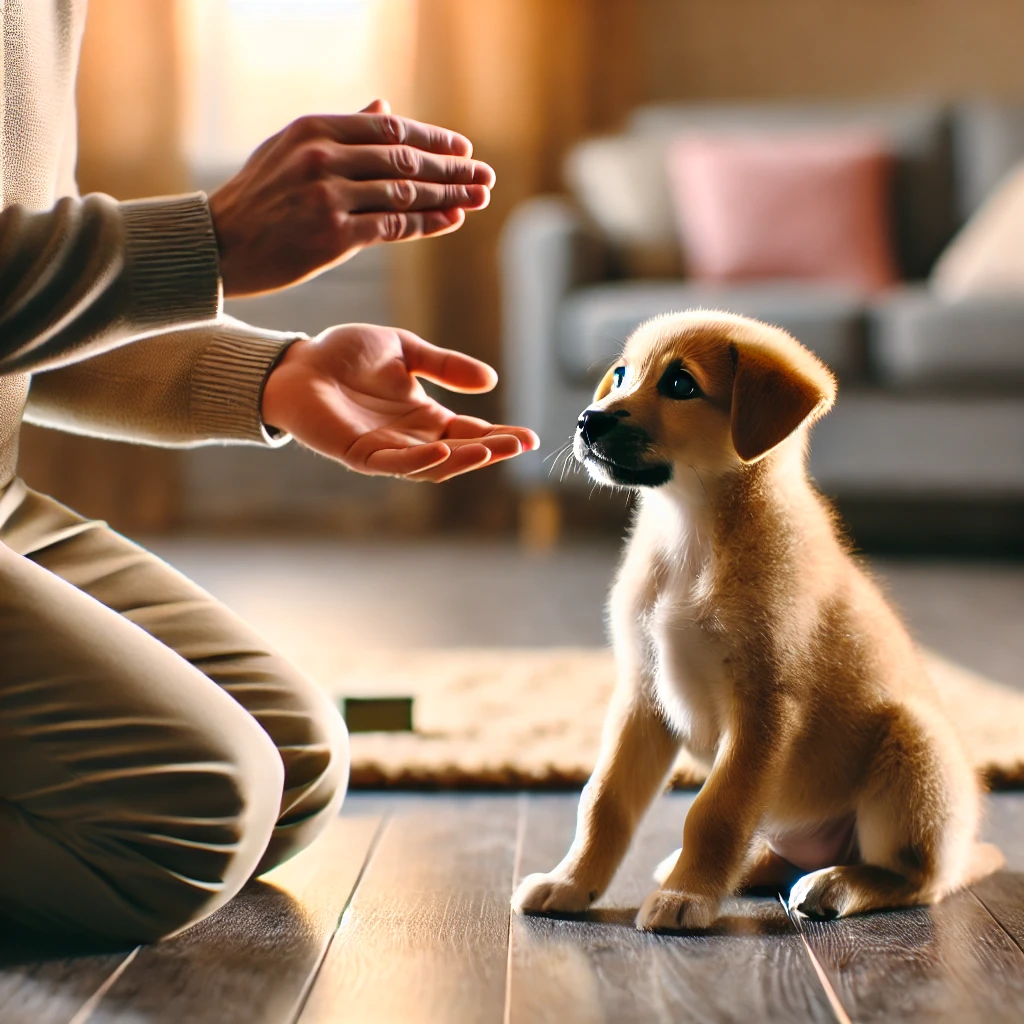
Even with the best training, puppies will sometimes exhibit unwanted behaviors. Addressing these calmly and consistently is crucial for maintaining your quiet puppy training.
A. Addressing Jumping and Nipping
- Redirect Energy:
- When your puppy jumps or nips, immediately offer a toy as an alternative.
- This teaches them appropriate ways to expend energy.
- Ignore the Behavior:
- For jumping, turn your back and ignore your puppy until all four paws are on the ground.
- This removes the reward (your attention) from the unwanted behavior.
- Teach Alternative Behaviors:
- Train your puppy to sit for greetings instead of jumping.
- Reward calm greetings with treats and praise.
B. Preventing Aggressive Treat-Taking Habits
- Use the “Wait” Command:
- Teach your puppy to wait before taking a treat.
- This promotes impulse control and calmness.
- Practice Hand Feeding:
- Regularly hand feed part of your puppy’s meals to reinforce gentle taking.
- This also strengthens your bond and establishes you as the provider.
- Gradual Exposure:
- If your puppy is very food motivated, start with less exciting treats.
- Gradually introduce higher-value treats as their control improves.
By addressing these behaviors early and consistently, you can prevent them from becoming ingrained habits.
VII. Consistency in Quiet Puppy Training

Consistency is the key to successful quiet puppy training. It’s not just about what you teach, but how everyone in the household reinforces these lessons.
A. Establishing Yourself as a Calm Leader
- Model Calm Behavior:
- Your puppy will often mirror your energy level.
- Practice staying calm and composed, especially during exciting times.
- Use Calm Body Language:
- Avoid sudden movements or loud voices.
- Use slow, deliberate motions when interacting with your puppy.
- Consistent Reactions:
- Respond to both good and unwanted behaviors in a calm, measured way.
- This helps your puppy understand what to expect from their actions.
B. Involving All Family Members in Training
- Family Training Sessions:
- Hold regular family meetings to discuss training progress and techniques.
- Ensure everyone uses the same commands and rewards.
- Assign Roles:
- Give each family member specific training tasks.
- This ensures your puppy receives consistent training throughout the day.
- Create a Training Log:
- Keep a shared record of training sessions and progress.
- This helps maintain consistency and track improvements.
By maintaining a united front in your quiet puppy training efforts, you’ll see faster and more lasting results.
VIII. Safety Considerations

While training your quiet puppy, it’s essential to prioritize safety for both your furry friend and your family members.
A. Preventing Injuries During Training
- Supervise Interactions:
- Always monitor play between your puppy and children or other pets.
- Be ready to intervene if play becomes too rough.
- Use Appropriate Equipment:
- Ensure collars, leashes, and harnesses fit properly and are in good condition.
- This prevents accidents during training sessions.
- Gradual Exposure:
- Introduce new experiences slowly to avoid overwhelming your puppy.
- This reduces the likelihood of fearful or overly excited reactions.
B. Creating a Safe Environment
- Puppy-Proof Your Home:
- Remove or secure potential hazards like loose wires, toxic plants, or small objects.
- Use baby gates to restrict access to unsafe areas.
- Safe Play Areas:
- Designate specific areas for play and training that are free from hazards.
- Ensure these areas have non-slip surfaces to prevent accidents.
- Proper Toy Selection:
- Choose age-appropriate toys that can’t be easily swallowed or broken.
- Regularly inspect toys for wear and tear, replacing them as needed.
By prioritizing safety, you create an environment where your puppy can learn and grow without unnecessary risks.
IX. Advanced Quiet Puppy Techniques
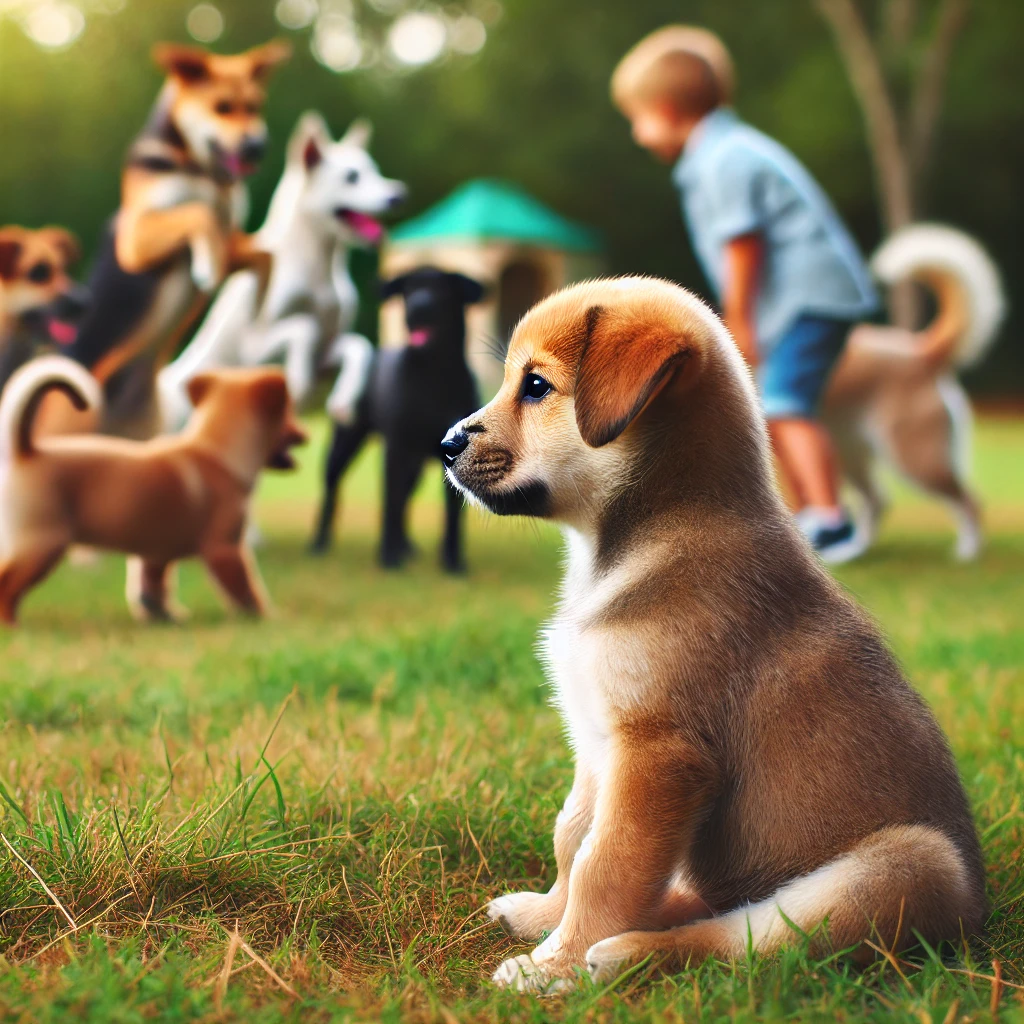
Once your puppy has mastered the basics of quiet behavior, you can move on to more advanced techniques to further refine their gentle demeanor.
A. Socialization Without Excessive Barking
- Controlled Exposures:
- Gradually introduce your puppy to new people, animals, and environments.
- Start with calm, quiet settings and slowly increase the level of stimulation.
- Teach a “Quiet” Command:
- When your puppy starts to bark, say “quiet” in a firm but calm voice.
- Reward them immediately when they stop barking.
- Use Distraction Techniques:
- When approaching potentially exciting situations, engage your puppy with a favorite toy or treat.
- This helps keep their focus on you rather than the stimulating environment.
B. Teaching Indoor Manners
- Establish Boundaries:
- Use positive reinforcement to teach your puppy which areas of the house are off-limits.
- Reward them for respecting these boundaries.
- Quiet Time Training:
- Schedule regular quiet times throughout the day.
- Reward your puppy for settling calmly in their designated area.
- Doorbell Desensitization:
- Practice with recordings of doorbells or knocks to reduce excitement.
- Reward calm behavior when these sounds occur.
These advanced techniques will help your quiet puppy become a well-mannered adult dog, capable of staying calm in various situations.
X. Conclusion
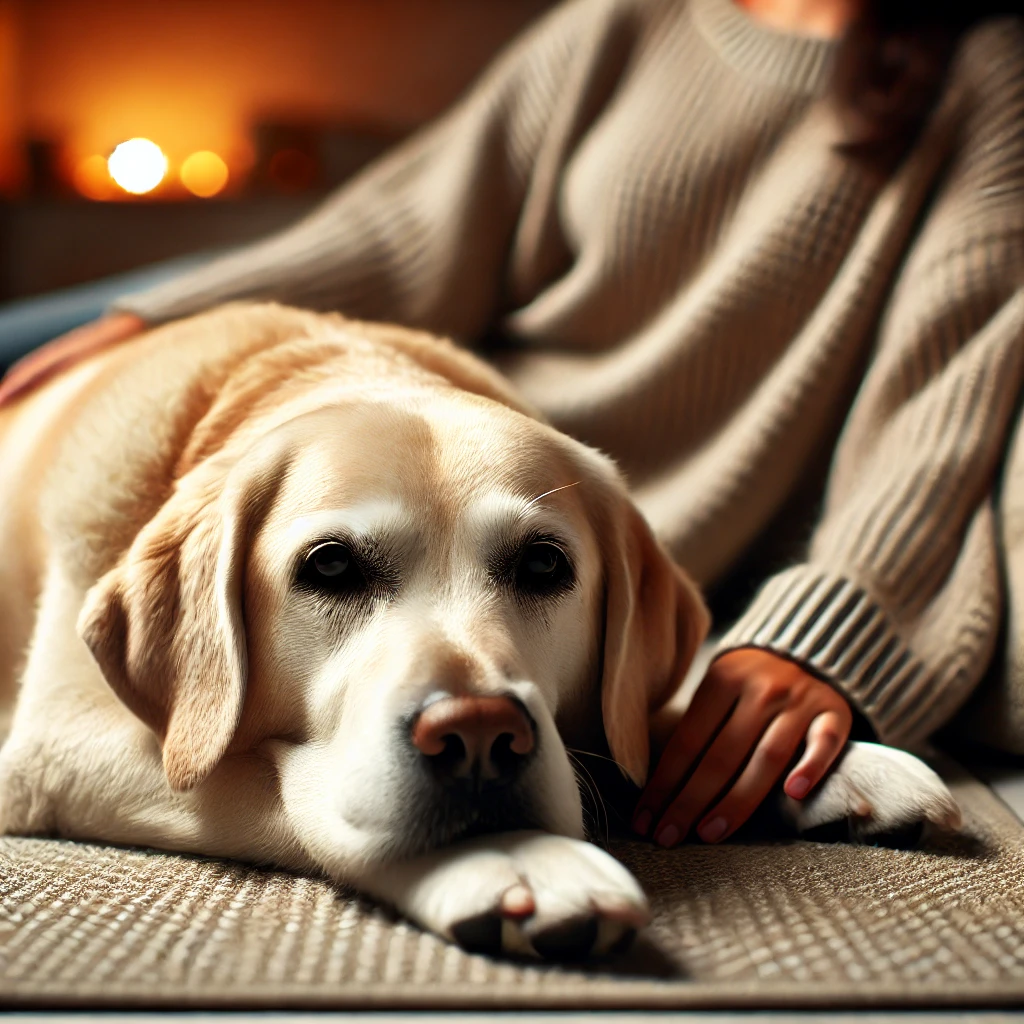
Raising a quiet puppy requires patience, consistency, and a commitment to gentle training techniques. By focusing on calm behavior from the start, you’re setting the foundation for a lifetime of positive interactions and a strong bond with your canine companion.
Remember that every puppy is unique, and progress may occur at different rates. Celebrate the small victories and remain consistent in your approach. The time and effort you invest in quiet puppy training will pay off in the form of a well-adjusted, gentle adult dog who brings joy and tranquility to your home.
Continue to reinforce these gentle behaviors throughout your dog’s life, and you’ll enjoy the companionship of a calm, quiet, and happy furry friend for years to come.

